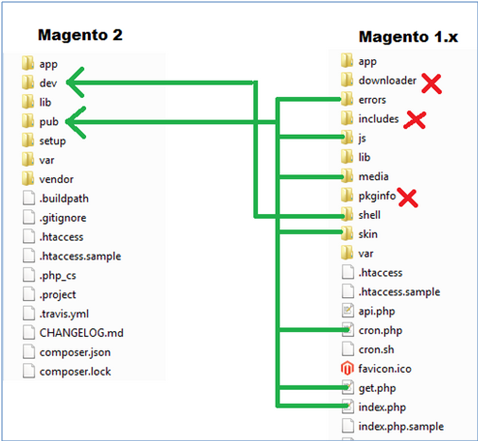Brief on Magento 2:
Magento came up with the release of its next-gen digital commerce platform, Magento 2.0 and launched it, at MagentoLive Australia. Vice President of eCommerce Products, Paul Boisvert, spokesperson of the event, shared brief overview of the Magento Commerce portfolio, which now includes e-commerce and cloud-based Omni channel solutions. He also gave an in depth review of Magento 2.0, how it is fruitful for both merchants and developers, and a preview of potential roadmap themes.
When should I upgrade to Magento 2?
This depends highly on your current site and its current condition – bottom line is, if you’re using a version that’s anything before 1.8 CE and 1.13 EE you should start exploring Magento 2, and we provide thoughts and Migration service for Magento 2.0.
If you’re on an older version of the software or even on a newer version but having serious performance issues, and on top of that you have a number of 3rd party extensions installed, now would be a great time to plan for a revamp.
If you need to do something serious to significantly improve your store’s performance, you should definitely plan the new investments to be done on Magento 2.
Difference between Magento 1 & Magento 2
Reduce upgrade costs and efforts
Magento 2 allows you to install and upgrade core software and extensions quickly and simply with lower upgrade costs and efforts. Magento 2 includes information on versioning policies, so developers can upgrade to new version easier. However, you need the support of new standalone installer to setup Magento 2.0 faster.
Root Folder Structure
New Built-in Technologies Under The Hood
| Magento 1.x | Magento 2.0 |
|---|---|
| Sass/Compass | HTML5 |
| Prototype JavaScript library in core | CSS3 |
| Jquery in rwd package | RequireJS |
| Additional JavaScript libraries | Apache 2.2 or later |
| HTML5/ CSS3 | PHP 5.5.x |
| PSR Compliance | |
| Install needed components via Composer | |
| Magento UI library | |
| CSS Pre-processor | |
| Full page caching | |
| Magento performance toolkit | |
| Dependency Injection |
Enhanced Performance & Scalability in Magento 2
- Magento 2 convey speed with the extremely fast page load time for home, category and product pages( <1.5 second per page) on first view. And more rapid time when the pages will catch( <0.75 second per page)
- Each step has checkout process designed for page tool( < 1.9 seconds per step) you can convert more sale
- Provide smoother shopping experience by minimizing and bundling javascript, re-scaling images and by integrating Varnish cache for better site performance
- You can go big for magento thanks to use database for order management, catalog and checkout
| Feature | Magento 1.x | Magento 2.0 |
|---|---|---|
| Compatibility with Oracle & MSSQL | No | Yes |
| Support for HTML 5 | No | Yes |
| Composer to Manage Dependencies | No | Yes |
| PSR Compliance | No | Yes |
| Full Page Caching | No | Yes |
| RMA, personalization, gift registry and gift points, advanced customer segmentation, better PCI compliance | No | Yes |
| Support for Symphony Framework | No | Yes |
| J Query | No | Yes |
- Magento 2.0 allows developer to setup automated test easily. There was no such provision in Magento 1.x.
- Magento 1.x uses APIs whereas Magento2.x uses Service contracts.
- Reduced table locking in Magento 2.x. Magento 1.x uses more database heavy operations comparatively.
- The architecture is more component oriented – If you don’t need any module you can disable it without hacking other modules or worrying about it affecting the functionality of other modules.
- Better and streamlined checkout flow is available in Magento 2.0.
- Very obvious change is in the directory structure of Magento 2.0.
- Better security in Magento 2.x.
What Next?
For all Magento store owners, 2016 will be the year to make some high-quality decisions for your business.
Magento 2 brings a whole new playing field for merchants and solution partners alike, and while we’re trying to stay on top of our game, you should too.






